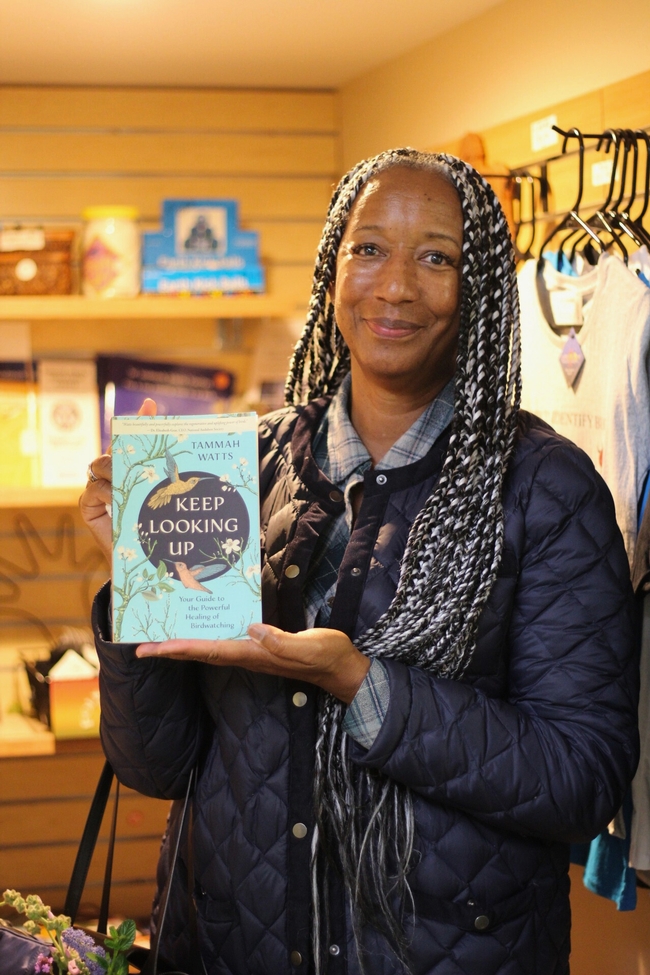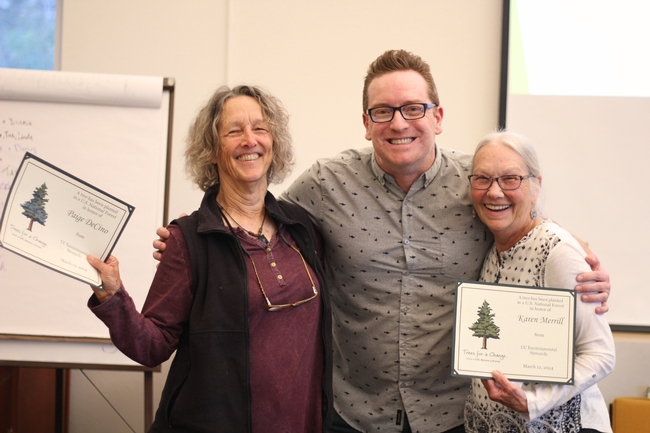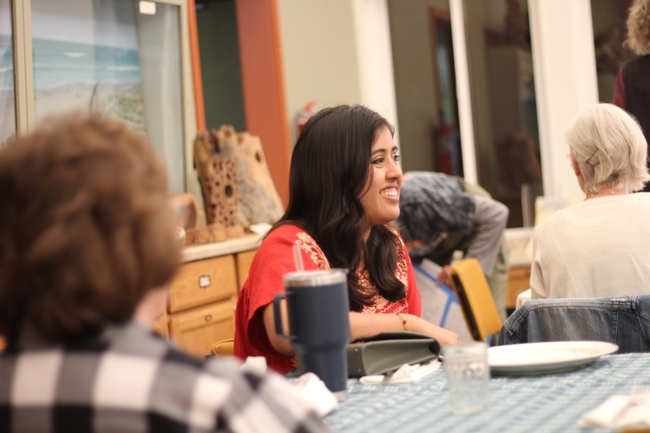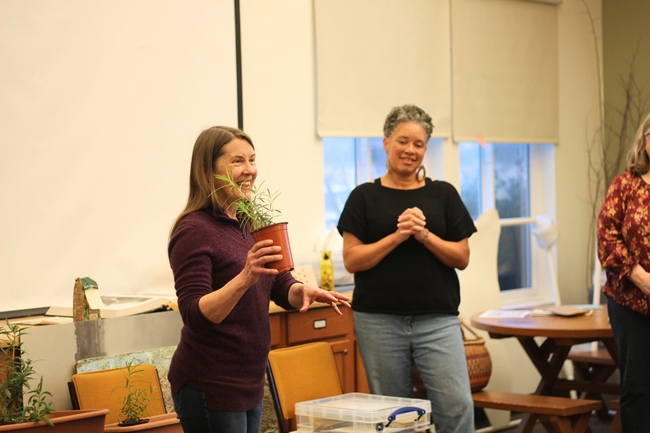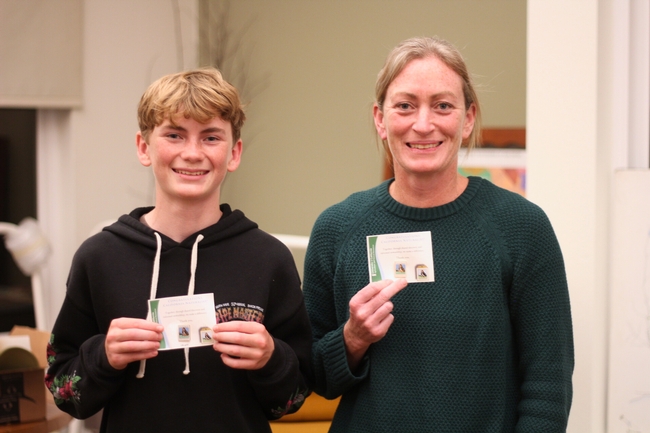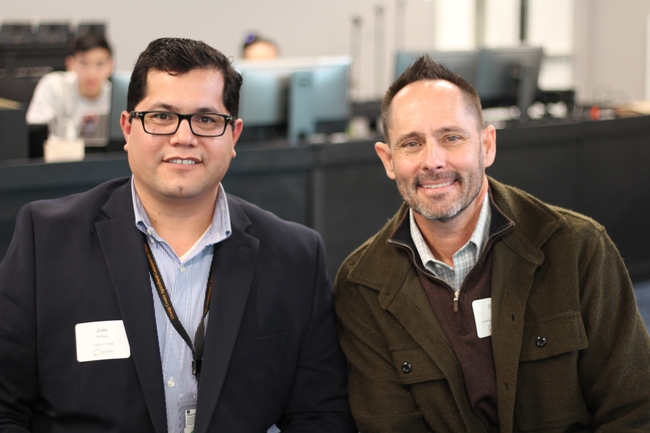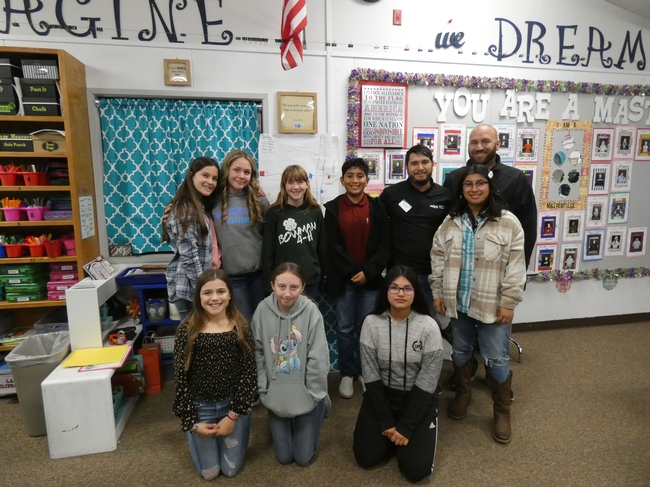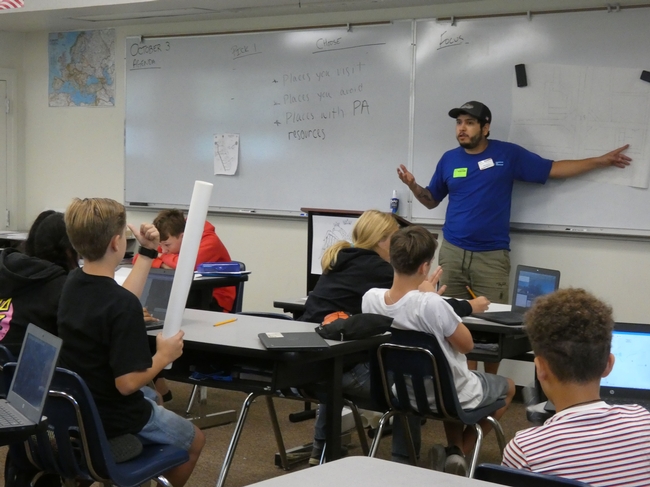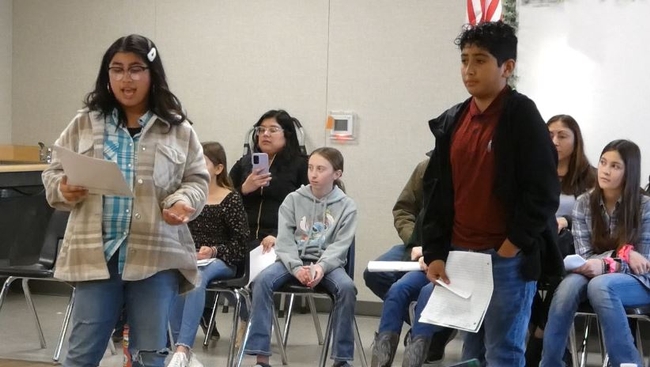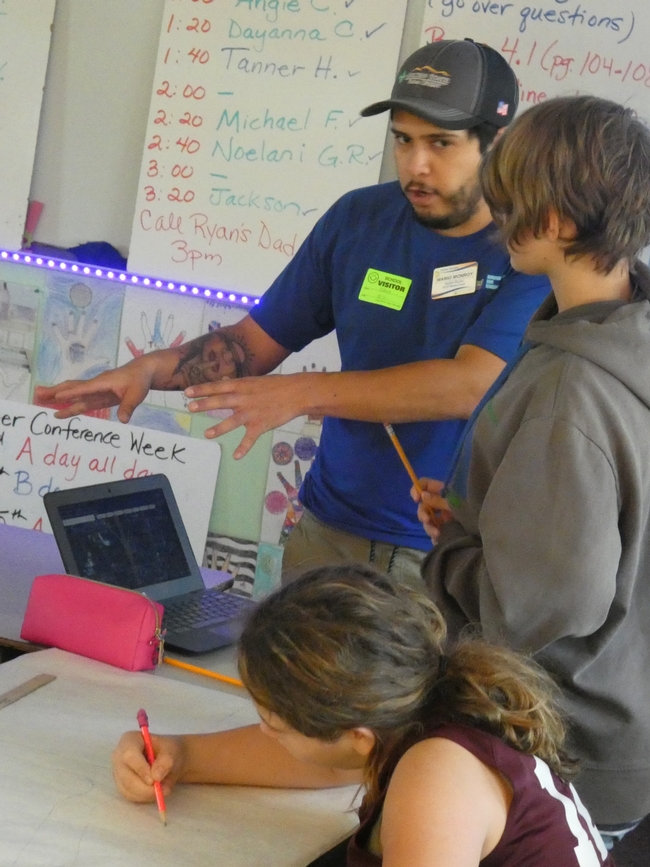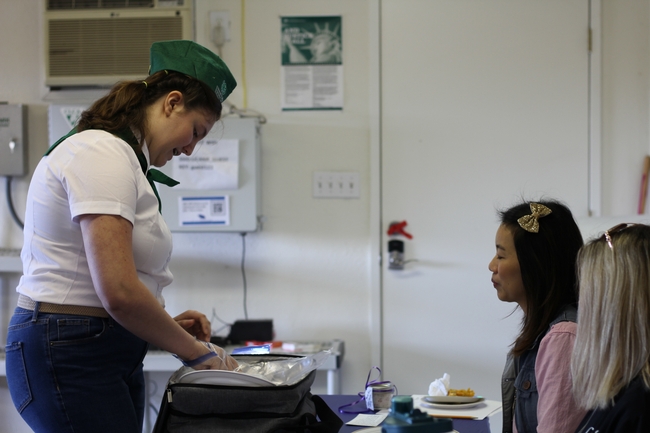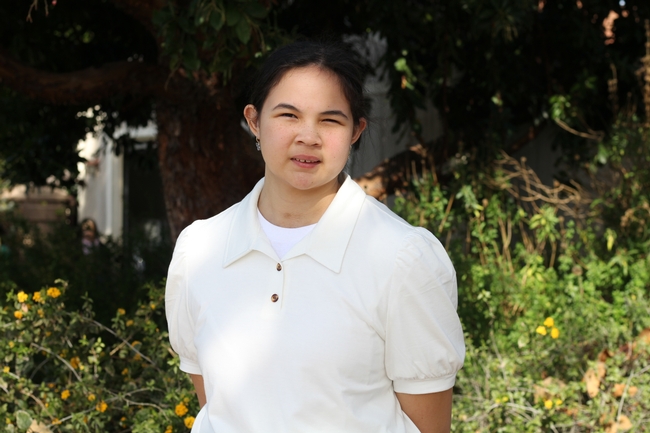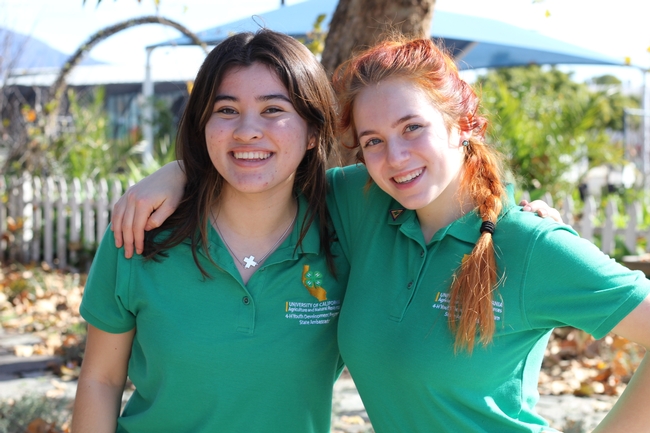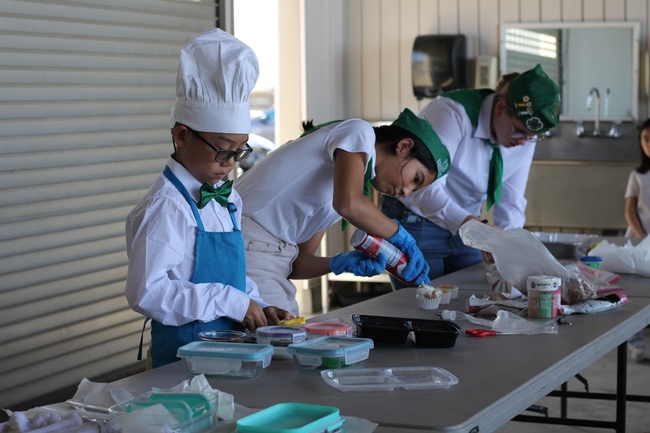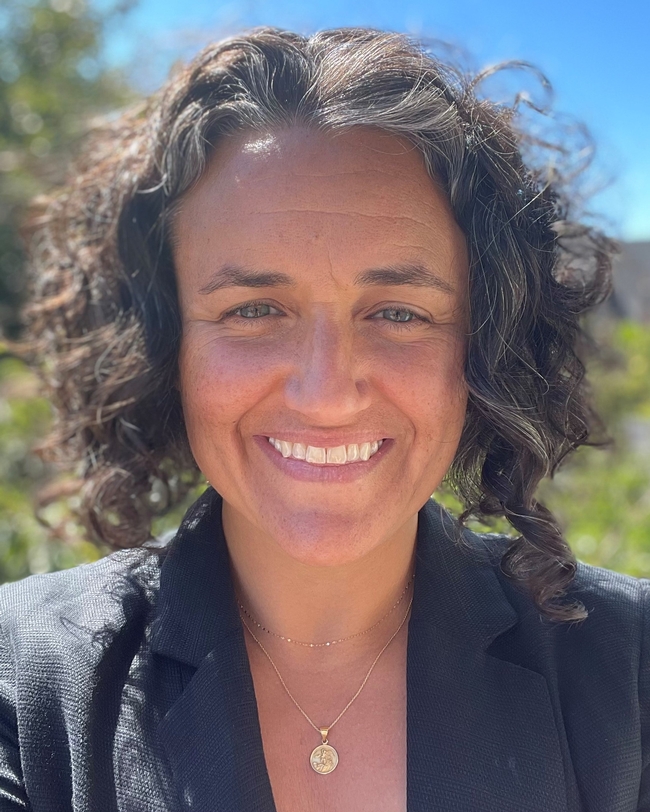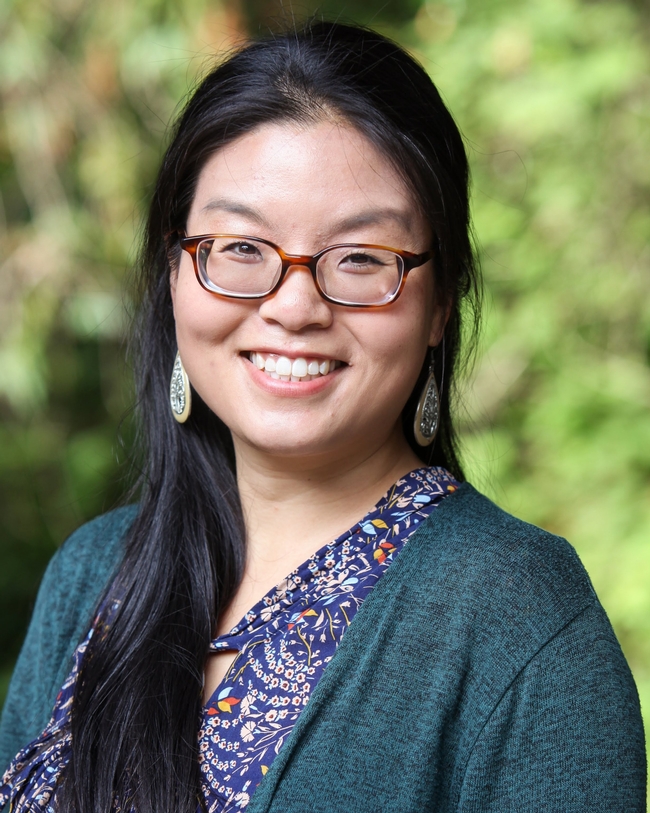Posts Tagged: health
New UC California Naturalists inspire care for nature in San Diego County
Nearly 200 residents trained in past seven years by program, a part of UC Environmental Stewards
On one of her darkest days, Tammah Watts stood in front of her kitchen sink to fill a pitcher of water. Outside of her window, the San Marcos resident noticed a flutter in the distance. She spotted a small yellow bird emerge from the tree and her eyes grew in admiration.
Bird-watching from her kitchen window became an escape for Watts while she was temporarily homebound after a surgery. It's where she found connection beyond the interior space of her home.
“I started noticing other birds that had always been there. The yard didn't change, but my mind and my perspective did,” she said.
Eager to learn more and expose others to her new hobby and its healing power, Watts joined the University of California Environmental Stewards program, a statewide program housed under UC Agriculture and Natural Resources, to become a certified California Naturalist.
The program offers two environmental education certification courses: the California Naturalist course, which introduces people to the wonders of California's unique ecology and engages the public in the study and stewardship of the state's natural communities, and a separate Climate Stewards course.
One of the many strengths of the program is that it allows people from diverse backgrounds to find common ground in nature even if how they became interested varies, said Eliot Freutel, a community education specialist for the UC Environmental Stewards program in Southern California.
“Our partners that help us administer the course are organizations that already have access to the public and provide informal science education, such as natural history museums or Audubon societies,” Freutel added.
Welcoming a new cohort of environmental stewards
In early March, the longest-standing California Naturalist course in San Diego County graduated 25 new members, Watts being one of them, under Karen Merrill and Paige DeCino's instruction. For seven years, Merrill and DeCino have served as co-instructors at the Buena Vista Audubon Nature Center in Oceanside and graduated 166 members prior to their most recent and final class.
Transitioning into retirement, DeCino and Merrill reflected on their seven years of service and are proud to see younger and more diverse faces join the California Naturalist program. Tucker Shelton, who recently graduated alongside his mom, is among the few young people who have joined the program over the years. A love for nature began when Shelton discovered tide pools when he was just a boy. At 14 years old, Shelton wants to inspire a generation of youth with a passion and care for nature.
“When you're younger and your brain is still developing, you're the most interested in new things. If you find a passion at a young age, you'll most likely grow up with it becoming a part of you,” said Tucker, whose capstone project focuses on an essay about the endangered Townsend's big-eared bat and uses stamp art to raise awareness. His art will be featured and sold at an upcoming exhibit and all proceeds will be donated to the Volcan Mountain Wilderness Preserve in Julian.
Hannah Marquez, another recent graduate, was born and raised in San Diego. She values its cultural diversity and believes connecting the public to nature begins with language. In working with Tecolote Canyon Natural Park and Nature Center in Mission Valley to establish an updated native plant library, Marquez is providing relevant information and resources in English and Spanish.
“A lot of people aren't comfortable using technology, and relying on Google Translate isn't going to cut it,” said Marquez, adding that her parents' limited English inspired this project.
Marquez hopes to interest more people in growing native plants in their backyard and believes accessible information is the first step to doing so.
“This has been so rewarding for us,” said Merrill. “Typically, our students are already involved in the community, but for those who aren't, it's amazing to see them become a part of the community and engage in a way that they haven't before.”
DeCino agreed and said that she really hopes to find new instructors to keep the momentum of California Naturalists in San Diego County alive. “Even though we're retiring, we'll still be around here and there, but its important to us that we pass the torch,” DeCino said.
The future of California Naturalists in San Diego County
What's next for San Diego County, you ask?
“We definitely want to expand in the area. But right now, we're looking for alums who are interested in taking over the program held at Buena Vista Audubon Nature Center,” Freutel said. “I'm also hoping to secure more partnerships throughout San Diego County so that the course is offered in various places, not just North County, which can lead to accessibility concerns.”
Like other students, Marquez commuted an hour, each way, to participate in the UC Environmental Stewards program. “It's a worthwhile course, one that helps people have a positive impact in their own community,” said Freutel.
For Watts, helping people find healing and connection to the world around them – an experience her book, a guide to the powerful healing of bird-watching, discusses – is a priority. “It's not just about watching birds,” she said. “It's about noticing the tree the bird lives in, and the ground the tree is growing in.”
During a nature walk that Watts led for a group of kids, she noticed two sets of footprints in the dirt. Immediately, she could differentiate the two. “One belonged to a raccoon and the other belonged to a deer,” Watts said. “I was so excited that I could tell them apart, and I promise I didn't know this before taking the CalNat course.”
To learn how you can join the UC Environmental Stewards program and become a California Naturalist or Climate Steward, visit: https://calnat.ucanr.edu/Take_a_class/
REC System Director Haver encourages systemic approach to agriculture
Agriculture generates $59 billion and employs nearly 400,000 individuals in California. The industry, however, is often threatened by challenges like climate change, land conversion and water scarcity. Motivated to act, Sustain Southern California – an organization associated with UC Irvine Beall Applied Innovation – hosted a roundtable discussion on Feb. 20 featuring subject matter experts including Darren Haver, director of UC Agriculture and Natural Resources' Research and Extension Center System.
During his keynote address, Jose Arriaga, Orange County Agricultural Commissioner, defined sustainability as food and fiber production that does not compromise the ability for future generations to meet their needs. In doing so, he acknowledged the benefit of discussing such timely topics with key players, especially for places where agriculture is not as prevalent as it used to be.
“Many people don't think of Orange County as a place for agriculture. It's probably because less land is being reserved for agriculture, not like back in the day. And that worries me,” said Arriaga.
The first roundtable discussion centered on sustainable agriculture, with Haver participating alongside other industry leaders based in Southern California, including A.G. Kawamura of Orange County Produce, Steve Brazeel of Sunterra Produce and Elevated Foods, Anthony Curci of Buttonwood Ranch and Parker Cohn from Performance Resource Management.
In discussing today's generation, Haver said that he has seen a shift over the last few decades away from yield alone, which used to be the most important aspect of production in agriculture. Today, much more attention is dedicated to sustainability – a change that Haver attributes to the younger generation of researchers and plant scientists working in agriculture.
There has also been an emphasis on sustaining the environment while maintaining economic progress. Haver recognized these important elements, but highlighted the social impact of sustainability, too.
“I don't have all the answers, but I do believe that addressing the environmental, economic and social aspects of agriculture is important. I also think that these factors should be addressed systemically rather than in silos,” said Haver.
Southern California agricultural producers, in particular, are responsible for $7.8 billion in gross receipts and nearly 100,000 jobs directly related to agriculture. In Orange County alone, where Haver is based at the South Coast Research and Extension Center, agriculture makes up $86 million of total economic output, with nurseries leading as a top commodity followed by fruit trees, vegetable production and livestock and apiary.
Sixth graders advocate for physical activity upgrades at school
Tehama County students empowered by CalFresh Healthy Living, UCCE educator and teachers
It's not uncommon for high school or college students to speak up and seek to improve their school environment. But at Evergreen Middle School in Tehama County, more than 100 sixth graders led the way to create healthy changes at their school.
As part of their health classes during the 2022-23 school year, the students researched the availability of spaces for physical activity, developed a survey gauging their peers' health awareness and needs, analyzed the results and data, and made recommendations for improvements.
“We learned that there's not a lot of places – except for Evergreen Middle School and some other parks around [our community of] Cottonwood – that have many physical activity places that you can easily get to or have access to,” said Bailey, one of the students.
They were guided by Mario Monroy-Olivas, a nutrition educator with CalFresh Healthy Living, University of California Cooperative Extension in Tehama, Shasta and Trinity counties. Locally administered by UC Agriculture and Natural Resources, CFHL, UCCE is one of the agencies in California that teaches nutrition to people eligible for SNAP (Supplemental Nutrition Assistance Program) – referred to as CalFresh Food in California.
Working alongside Evergreen teachers Roxanne Akers and Albert Estrada, Monroy-Olivas challenged the sixth graders to tackle a “Youth Participatory Action Research” project – a yearlong, multi-step undertaking typically designed for older teens.
“The fact that we're doing it with these younger kids, starting a lot sooner, I think it's super impactful for them to know that, together, collectively they can make huge changes that will create positive outcomes – not just for themselves but for an entire community,” Monroy-Olivas said.
Middle school students speak up at school board meeting
In February 2023, eight class representatives presented their findings to the Evergreen Union School District Board of Education. Speaking before the five-member board for 20 minutes, the young people were naturally a bit nervous.
“It was a little nerve-wracking at first, but it wasn't that bad, once we got up there and got it over with,” said Lilah, one of the presenters. “Me and a couple of my friends were doing pep talks and practicing what we were going to say.”
The students showed a composite map that they drew from their classes' investigation of spaces for physical activity in the area, and shared a brochure that outlined their research and survey results. In a survey of more than 80 of their peers, 92% of respondents said they needed more access to physical activity equipment during class breaks, recess and lunch.
“The board members were super impressed with the students, coming to the school board and doing this,” Monroy-Olivas said. “They said they haven't had students doing this kind of advocacy work; for them, it was a really big deal.”
In the end, the young people made a strong case for more water-bottle refilling stations, badminton equipment and balls for other sports, and stencils for schoolyard activities like hopscotch, four square and snail (a type of hopscotch game).
“We got almost everything we asked for, and the project we're working on now is to help put in the things we asked for,” said Lilah, adding that, during this current school year, the students (now in seventh grade) are working on acquiring the stencils and paint.
More than just equipment, students gain skills and confidence
While the promise of new gear is exciting for the youth, they are acquiring something even more valuable and enduring – a sense that they are empowered to make a difference in their community, according to Janessa Hartmann, UC Cooperative Extension community nutrition and health advisor for Tehama, Shasta and Trinity counties.
“Yes, it's important to want to do stencils and hydration stations and have more equipment,” Hartmann said, “but the bigger impact for the students is that they think: ‘Now I know that my health is important, now I know how to advocate for myself, and now I know that I can do that.'”
Monroy-Olivas said he observed tremendous growth in all the students, and especially in the self-confidence of the class representatives.
“I grew as a leader because I used to be really shy and hated talking in front of people, but through this project we're doing, this has really helped me be able to talk in front of crowds – and listen to others,” Lilah explained.
In a survey at the end of the sixth-grade project, the percentage of youth who answered “Yes, most definitely” to the statement “I want to make a difference in making my school/community healthier” jumped from 19% before the project to 44% after. And that percentage of “Yes, most definitely” replies jumped from 6% to 31% for the statement “I can use research results to come up with solutions or recommendations for making my school/community a healthier place.”
“We learned to promote what we want and try to get it as much as we can, so we can get more physical activities and more people can be included,” said Brian, another student working on the project.
“It's important so when we get older, we know how to voice our opinions and let people know what we're thinking,” added classmate Brooklynn.
Wishing that he had such an opportunity when he was growing up, Monroy-Olivas said he feels the students now know the power of their voice.
“I wholeheartedly believe that's the biggest win out of this whole project, that they're learning how to advocate for their own voice and change,” he said.
‘Super Carbolicious’ 4-H Food Fiesta challenges young chefs
Inside a quiet classroom, Sadie, a 4-H member in Orange County, stands in front of two judges with an insulated cooler bag in hand. From it she pulls out plates, utensils and napkins and sets them down on the table. She unzips the bottom compartment and carefully reaches for a cast iron platter with golden fluffy pancakes piled on top.
“Would you like syrup with your pancakes? I highly recommend it,” said Sadie, an eighth grader who is participating in the annual 4-H Food Fiesta for a second time.
4-H, a youth development program supported by the University of California Agriculture and Natural Resources and administered through local UC Cooperative Extension offices, promotes hands-on experiential learning for all youth.
Rita Jakel, 4-H program coordinator for Orange County, described the Food Fiesta event – intended for ages 5 to 18 – as an opportunity to practice and showcase public speaking skills through a fun, food-related competition.
Youth present their creations before a panel of evaluators, who ask them to describe how they prepared the dish and why, and how they managed challenges throughout the process. The interaction between youth and adult leaders provides a unique opportunity for youth to practice career readiness skills such as job interviews and public speaking.
This year's theme was “Super Carbolicious” and 4-H participants were encouraged to make their favorite dishes using ingredients like pasta, potatoes and bread. Carbohydrates are often perceived as unhealthy, which is not a helpful mindset to have when teaching youth about nutrition. Carbohydrates provide the body with glucose, which is converted into energy that people need to function throughout the day.
Some of the dishes that were presented during the Food Fiesta included chocolate chip banana bread, cheesy baked potatoes, cookies and Nutella-stuffed crepes. 4-H member Kaitlin had only ever attended the Food Fiesta to cheer on a friend. This year, she decided to participate and presented pumpkin macaroni and cheese as her entry.
“Pumpkin mac and cheese is better than the regular one because there's a lot more flavor and you have to use two cheeses: cheddar and parmesan,” explained Kaitlin, a seventh grader. When asked what motivated her to participate instead of a being a bystander this time around, Kaitlin said that she wanted to work on her presentation skills.
“Usually, I'm a bit shy and I don't like to share that much. The Food Fiesta helped me practice speaking up more so that I can accomplish my goals,” Kaitlin said.
Sadie, who loves public speaking, admits that it wasn't always a strength of hers. “There was a time when I hated public speaking. But when I joined 4-H's cake decorating, poultry and food fiesta events, I got more comfortable with public speaking,” she said. “Now, I like going to events and showing off. I get to show off turkeys, my cakes and, today, I presented homemade pancakes.”
Helping to keep the day's festivities running smoothly were two 4-H state ambassadors: Michaela and Laurelyn, two high school seniors. Both have been involved in 4-H for over nine years, with Laurelyn being a third-generation 4-H member. “My grandmother grew up in a 4-H club in Orange County. She still raises breeding lambs for 4-H members to this day,” said Laurelyn, whose mother was a 4-H member in San Joaquin County.
As state ambassadors, they are responsible for creating and presenting workshops during state, national and regional events. “We also engage the public via social media, specifically TikTok and Instagram (@4horangeco),” said Michaela, who is in her second year as an ambassador.
During the Food Fiesta, Michaela and Laurelyn made themselves available to answer questions from participants and their families. Both ambassadors agreed that seeing parents involved in 4-H should not come as a surprise. “Being in 4-H is a family effort. This isn't an extra-curricular where you just drop your kids off and leave,” said Michaela.
Laurelyn shared that the biggest misconception others have about 4-H is that they think it's about introducing youth to agriculture or livestock. There's a civic engagement and leadership component to it, too. “If parents knew about all the ways 4-H can benefit their kids, I think more people would want to join us,” she said. “And they're finding fun ways to help us learn life skills, like this Food Fiesta.”
The homemade dishes weren't the only thing to look forward to, however. In another building, Sandy Jacobs, volunteer event coordinator, and her team set up a kitchen quiz for members. On several tables, there were different cooking tools and participants were challenged to name as many tools as they could.
In another classroom, while some members were presenting food, others presented their themed table setting décor. Participants had to prepare a complete table setting entry including a menu card, centerpiece and table settings for two. Judges considered creativity, use of color, table setting etiquette, knowledge in talking to the judges, and appearance in their evaluation.
Finally, to wrap up the day, members competed in a cupcake decorating competition. Participants were responsible for bringing their own supplies including tools and edible decorations for Cupcake Wars. Depending on their age group, participants had 20 minutes to decorate two to four cupcakes, each of a different theme.
To learn more about 4-H in Orange County, visit https://oc4h.org/.
NPI researchers find school recess varies with school size, family income
New law mandates at least 30 minutes of recess for K-8 public school students
Last year, while working on a bill that would require California public schools to provide at least 30 minutes of recess, State Sen. Josh Newman sought the latest research on youth physical activity. Newman, whose district encompasses parts of Los Angeles, Orange and San Bernardino counties, traveled to the Bay Area to see one of the leading experts in the field.
During several visits with Newman, Hannah Thompson – a Nutrition Policy Institute senior epidemiologist and an assistant research professor in the University of California, Berkeley School of Public Health – shared the most recent science.
Both the American Academy of Pediatrics and Centers for Disease Control and Prevention recommend that children have 20 minutes or more of daily recess. But, when asked about the current “state of recess” across California, Thompson said she only knew of anecdotal evidence at the state level.
“I said, ‘You know what? I don't actually know what is going on in California,'” Thompson recalled. “I contacted a couple of colleagues who had done more national-level work on recess that included samples of California schools – but no one was really able to disaggregate what was happening in California.”
She brought up the bill during a meeting with her fellow researchers at NPI, an institute under UC Agriculture and Natural Resources.
And it turned out that Janice Kao, an NPI academic coordinator, had exactly what she needed.
CalFresh Healthy Living evaluation team provides key recess data
Kao leads a project team that evaluates local health departments' programs of CalFresh Healthy Living – California's version of the educational arm of SNAP (the federally supported Supplemental Nutrition Assistance Program).
As part of that evaluation process, Kao's team coordinates questionnaire administration at SNAP-Ed-eligible schools that are partnering with local health departments on CalFresh Healthy Living interventions, ranging from nutrition programs to physical activity initiatives. The survey asks school administrators about their current policies, environments and practices – including the provisioning of recess.
“It was just really good luck that everything was in the right place at the right time to be able to work together,” Thompson said.
At Thompson's request, Kao and her colleagues processed and cleaned that crucial piece of data, comprising responses from 153 low-income elementary schools in the 2021-22 school year.
“Just 56% of schools reported providing more than 20 minutes of recess daily,” Kao said. “So this was a situation where the data showed, ‘OK, there is some room for improvement, perhaps at that state policy level.'”
Thompson and Rebecca London, a sociologist at UC Santa Cruz, wrote a research brief detailing their analysis of the data. They describe disparities in recess time based on school size and income level of families, with students in larger, less affluent schools generally receiving less daily recess.
Thompson said those disparities are related to funding and academic inequities, as the imperative to boost test scores forced schools to increase certain classroom hours at the expense of recess time.
“We did all this work engineering physical activity out of the school day despite the tremendous body of evidence that shows physically active kids not only are healthier but can concentrate better; they have better academic performance, fewer disruptions, better classroom behavior,” explained Thompson, a former physical education teacher in Oakland. “In trying to address that academic gap, we ended up exacerbating a lot of these public health disparities.”
Virtual learning during the pandemic showed educators and parents – firsthand – the harmful effects of children staying sedentary in front of computer screens for hours. But the resulting momentum for restoring recess and time for physical activity was soon stalled as schools tried to make up for “lost time” in returning to classrooms, Thompson said.
NPI resources, expertise invaluable to lawmakers
Newman's bill, SB 291, was an attempt to lock in those recess minutes that are crucial for student health, development and scholastic performance. Both Thompson and London testified before the Senate Education Committee in April 2023, providing the senators with science-based information and context to guide their policymaking.
“Crafting policies rooted in science is critical for legislators to ensure our policies are impactful,” Newman said. “The work of Dr. Thompson and her colleagues at UC provided clear and useful guidance on the benefits of unstructured play and how to improve health and educational outcomes in California schools.”
Gov. Gavin Newsom signed SB 291 into law last October. Starting this coming school year, public elementary and middle schools across California will be required to give at least 30 minutes of recess to K-5 students – and prohibited from withholding recess as punishment.
Kao said her team was excited that their CalFresh Healthy Living evaluation data was useful for lawmakers, illustrating NPI's important role in informing evidence-based policy.
“I'm hopeful that we can use this same data set to also provide key pieces of information on other types of legislation that's in the works, or newly passed legislation,” Kao said.
Thompson said the challenge now will be ensuring schools have the resources and funding to provide quality time for young people.
“If you only have one schoolyard, and it's already dedicated to PE, what do you do now, if you have to increase your time for recess and you don't have that space?” she said.
Thompson added that she is currently applying for a grant to study how schools across California are adjusting to meet the new requirements.

